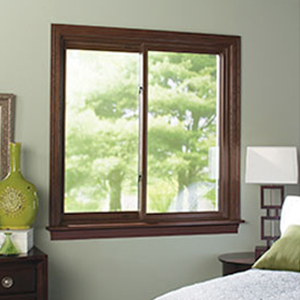Condensation is a sure sign that your windows need to be changed.
Windows are an essential barrier in between the rough, variable weather conditions outside and our calmness, consistent residence temperature levels. Home replacement windows quite often have a fifteen to twenty-year life expectancy, so fortunately we don't need to consider replacing them too often. But knowing when it's time to replace them can be challenging. You might be tempted to try and hold out for another season if you notice the warning signs. But changing your windows now could help you extend the life of your entire house and maintain you as well as your household warm all winter season long. Here are a couple of indications that your windows are not all set for the severe winter months this year.
Drafty House
As home windows age, they start shrinking, damaging, and not shutting correctly, enabling air from within your the home of spurt. As a result of this, your A/C system struggles to keep your residence at a continuous temperature level and sends your power costs escalating. If your residence is noticeably a lot more breezy or your electric expenses appear to be going up this fall for no noticeable reason, you might intend to have your windows took a look at.
Difficult to Lock
We delight in having our windows open when the climate is nice, however they should not be open every one of the moment. During the winter season when we're not home, your windows must be shut in area and also locked. Windows with malfunctioning locks is a major safety and security danger that need to be remedied immediately to keep your household risk-free. Often the lock can be repaired inexpensively, but if the window is having trouble staying open or shut or is dripping air, it might be best to just set up a new one.
Condensation Forming
The greatest indication that you need new windows is when condensation starts to form on the inside of your home window when it is closed and also secured. This is a sign of a most likely permanent flaw and should be addressed asap to stop the possible development of mold in the frame, which can infect various other areas of your home and also create severe damages when left without treatment.
Have you almost had it with your old, drafty home windows?
Is this the year you've determined to lastly replace your home windows? Changing your windows with brand-new ones features great deals of benefits, including a power effectiveness boost, far better ventilation, and far better high quality of light in your home. The National Window Rating Council licenses and classifies home windows (as well as doors and also skylights) on their performance and energy performance. When you're purchasing new windows you'll see these rankings on the NFRC label. In this week's blog site, we'll discuss how to read this tag to make sure you're making an educated decision on your brand-new windows.
Warm Gain and Loss
The very first 3 properties on the tag have to do with exactly how the home window carries out when it come to heat gain as well as loss. Windows gain and also lose heat in three methods:
Straight transmission through the glass.
Radiation of warm from the sunlight into your home, and also out of the house from items in your home.
Air leak through as well as around the home window.
U-factor
This is "The price at which a home window, door, or skylight conducts non-solar warm circulation." The takeaway here is "The lower the U-factor, the a lot more energy-efficient the home window, door, or skylight."

Solar Heat Gain Coefficient
The SHGC tells us just how much radiation is confessed via the home window and also launched as warm in the house. The lower the number, the less heat is transmitted. However, this does not always indicate you desire a low SHGC. For example, because a higher SGHC means the home window enables a lot more warm in, you can permit extra solar warm inside in the wintertime, which might reduce your home heating needs. In this situation, the climate you stay in will certainly play a major consider picking an SHGC score.
Air Leakage
This evaluates just how much air the window allows relative to a particular stress difference across it. The reduced the rating, the much less air leakage.
Sunlight Passage
The next 2 scores gauge just how much light a window allows into your residence.
Visible Passage (VT).
This number in between 0 and 1 actions what portion of the range of visible light the home window lets through. The greater the fraction, the more light the home window will certainly enable. If you want to utilize daylighting in your house, you'll want a greater fraction. If you wish to reduce indoor glare, you might desire a lower portion.
Light-to-Solar Gain.
This number is the ratio between the SHGC and also the VT. "The higher the number, the a Buresh Home Solutions lot more light transmitted without including excessive amounts of warmth.".